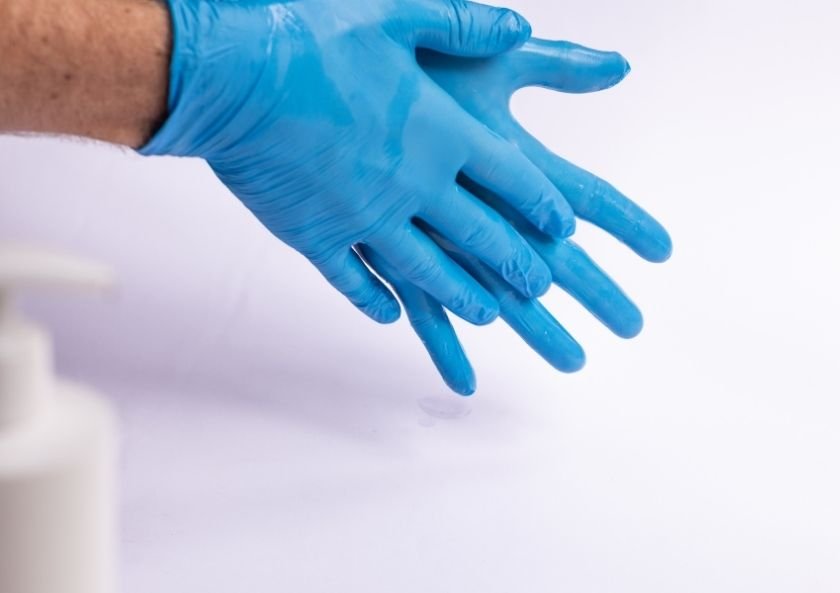With the widespread use of latex produced from rubber tree in the world, complaints related to latex have started to increase. Especially in healthcare workers, the prevalence of those exposed to latex at an early age increases up to 10%. In societies, complaints due to latex allergy can be seen around 4% in adults.
Allergic diseases that develop due to latex contact cause different symptoms. When contact through the skin and mucosa, itching may appear in the body as redness. If it is in contact with the respiratory tract, sometimes a runny nose, congestion, itching, sneezing and shortness of breath can be seen. The most serious reaction to latex is anaphylactic shock resulting in urticaria angioedema, shortness of breath, low blood pressure and fainting. Symptoms of latex allergy range from urticaria to anaphylaxis, with itching, redness and swelling where it touches the body.
Latex Allergy Symptoms in Adults
The most common reaction in healthcare workers who come into contact with latex products is irritant dermatitis on the hands due to prolonged contact. Irritant dermatitis, which is the most common clinical reaction with the use of gloves, develops due to dry, itchy, non-allergic irritation where the glove touches. It occurs due to perspiration when gloves are used after the use of other irritants such as soap in people who wash their hands excessively.
One of the allergic reactions that occur when exposed to latex through the skin is contact dermatitis due to type IV (delayed type) hypersensitivity reaction to latex and additives. Allergic contact dermatitis occurs in skin areas that come into contact with gloves, shoes, sports equipment and medical products where latex is commonly used. These chemicals can cause erythema, itching and blisters. Itching and redness usually begins 24-48 hours after contact, as early as eight hours and at the latest in five days.
Another reaction seen in latex allergy is contact urticaria, which develops especially where it comes into contact. Symptoms usually begin within minutes of exposure to latex, but may occur hours later. It appears as redness, blistering or itching in areas where latex-containing products or gloves come into contact.
Allergic Reactions Due to Latex
Allergic reactions due to latex, except skin lesions; It can manifest itself with symptoms such as runny nose, rhinitis, conjunctivitis, and asthma. Although latex allergy is more common, especially in healthcare workers, it is also encountered in people who work in other jobs such as the rubber industry, other than pastry shops or bakeries, who come into contact with products containing latex for a long time.
Classically, latex-related occupational asthma manifests itself as wheezing and shortness of breath that occur or worsen in the workplace. People with asthma and rhinitis attacks in the workplace should be evaluated in terms of latex allergy.
The most serious clinical picture that latex allergy can cause is fatal allergic shock (anaphylactic shock). The most serious consequence of latex allergy is anaphylaxis. Allergic shock usually occurs due to ingestion of latex proteins through the mucosa or intravenously during surgery, medical or dental procedures in previously sensitized healthcare workers or other persons.
Exposure to latex antigen can occur in different ways. Latex allergy occurs after contact with the skin, respiratory tract, mucosa and parenteral routes. Serious reactions may occur with skin and respiratory exposure, but exposure to direct mucosal and vascular access during surgical procedures poses a greater risk of developing anaphylaxis.
In recent years, it has been shown that cross reactions between pollens and foods such as fruits and vegetables are observed, and those with pollen allergy may have further complaints with foods. Another allergen that causes oral allergy syndrome is proteins in latex. There are many allergens that cause latex allergy, and some of them are also found in fruits and vegetables. Some people who are allergic to latex eat fruits such as banana, avocado, kiwi, chestnut, itching and redness on the body, which can lead to allergic shock. Considering that this situation is caused by cross-reacting allergens, a special picture called latex-fruit syndrome has been defined.
What should be done to diagnose Latex Allergy in adults?
The patient’s history and occupation are very important to diagnose latex allergy. If a healthcare professional is doing a job where he or she is exposed to products containing too much latex, has had frequent surgery since childhood, or has been exposed to frequent surgical procedures, if allergic reactions occur after touching latex products during these procedures, it is possible to think of a latex allergy.
Depending on the history and physical examination results, the diagnosis can be made by performing skin tests, blood tests and, if necessary, latex challange tests. If it is thought that they have complaints due to latex allergy, an experienced allergist is needed who can apply these diagnostic methods at the same time.
The skin prick test is the most reliable test to determine latex sensitivity. If contact urticaria, allergic rhinitis and asthma symptoms occur in patients with suspected latex allergy, skin prick test is used to show sensitivity.
In latex allergy, specific IgEs specific to latex can be detected with RAST and newly used molecular allergy tests. It can be seen in foods that cross react with latex, especially with molecular allergy tests.
Atopy patch test has been shown to be useful in demonstrating skin reactions in patients with contact dermatitis complaints among skin lesions.
Sometimes, when we are not diagnosed with latex allergies, it may be necessary to perform latex provocation tests to explain the complaints. Since provocation tests with latex can cause very serious reactions, they must be done under the supervision of an allergist.
How to Treat Latex Allergy in Adults?
Because latex allergy can be life-threatening, the best treatment for a latex allergy is to avoid any products that contain latex.
Patients who have had a severe latex allergy reaction must carry an allergy card showing latex allergy and an epinephrine (adrenaline) automatic injector for emergency treatment.
There are studies showing that allergy vaccine (immunotherapy) is effective in latex allergy, but immunotherapy for latex is not applied in our country. There are publications on anti IgE (oma) which is one of the newly developed drugs in addition to vaccine treatment in latex allergy. It appears that Oma can be used in latex allergy.
It should be kept in mind that when latex allergy cannot be diagnosed, it can cause serious problems. It would be appropriate for people with latex allergies to get help from allergy specialists so that they can continue their lives without any problems with precautions and drug treatments.






